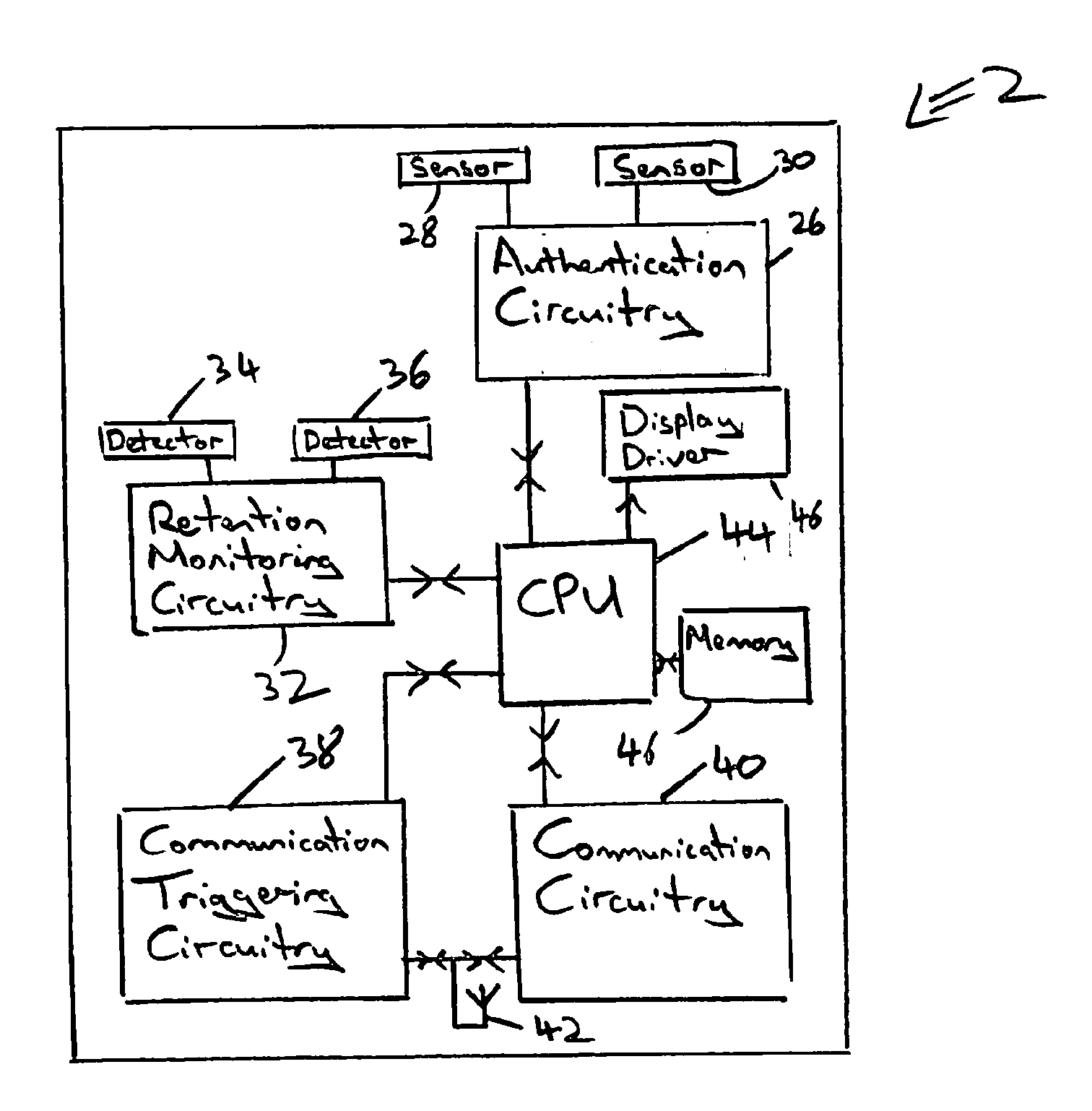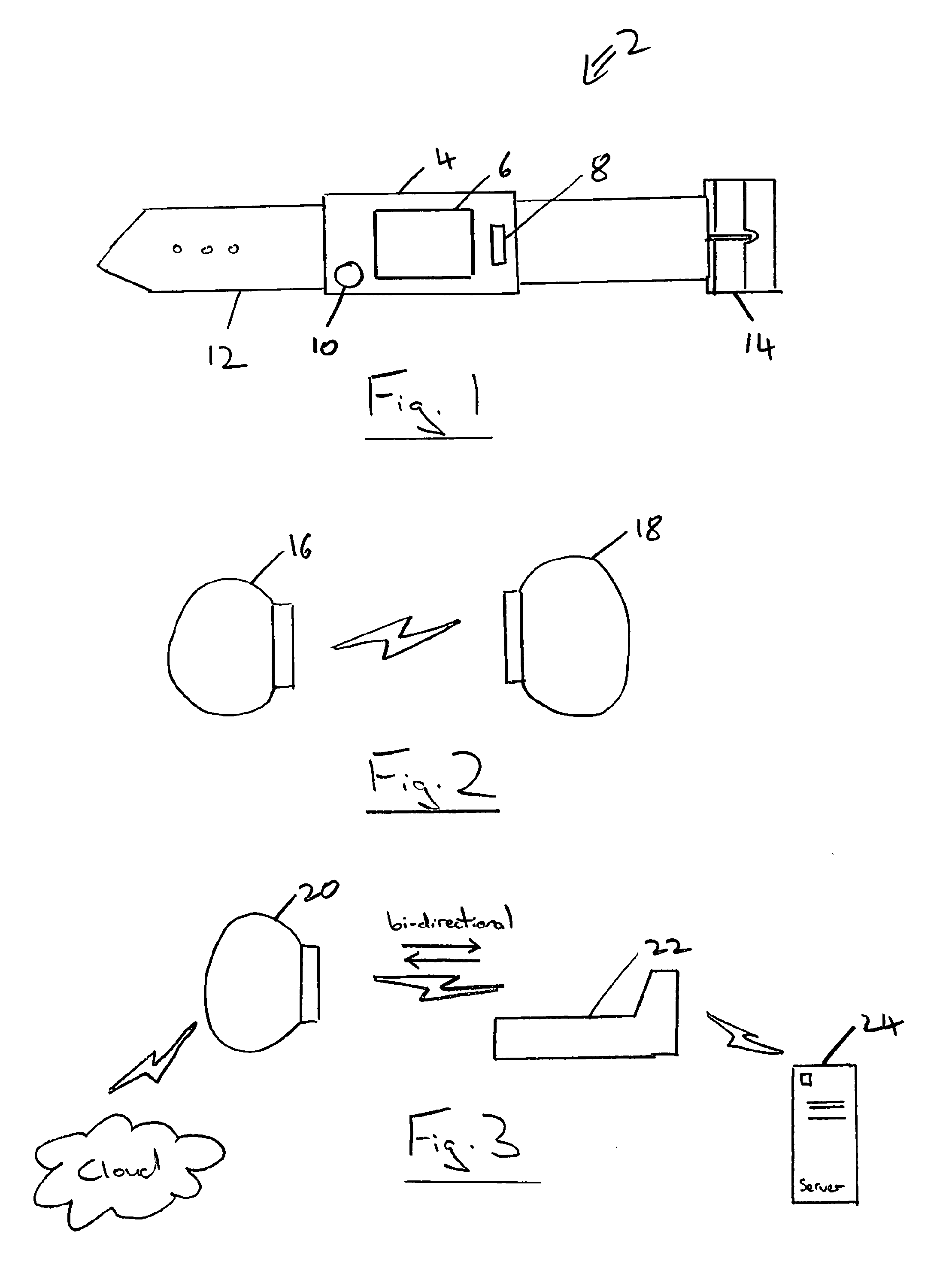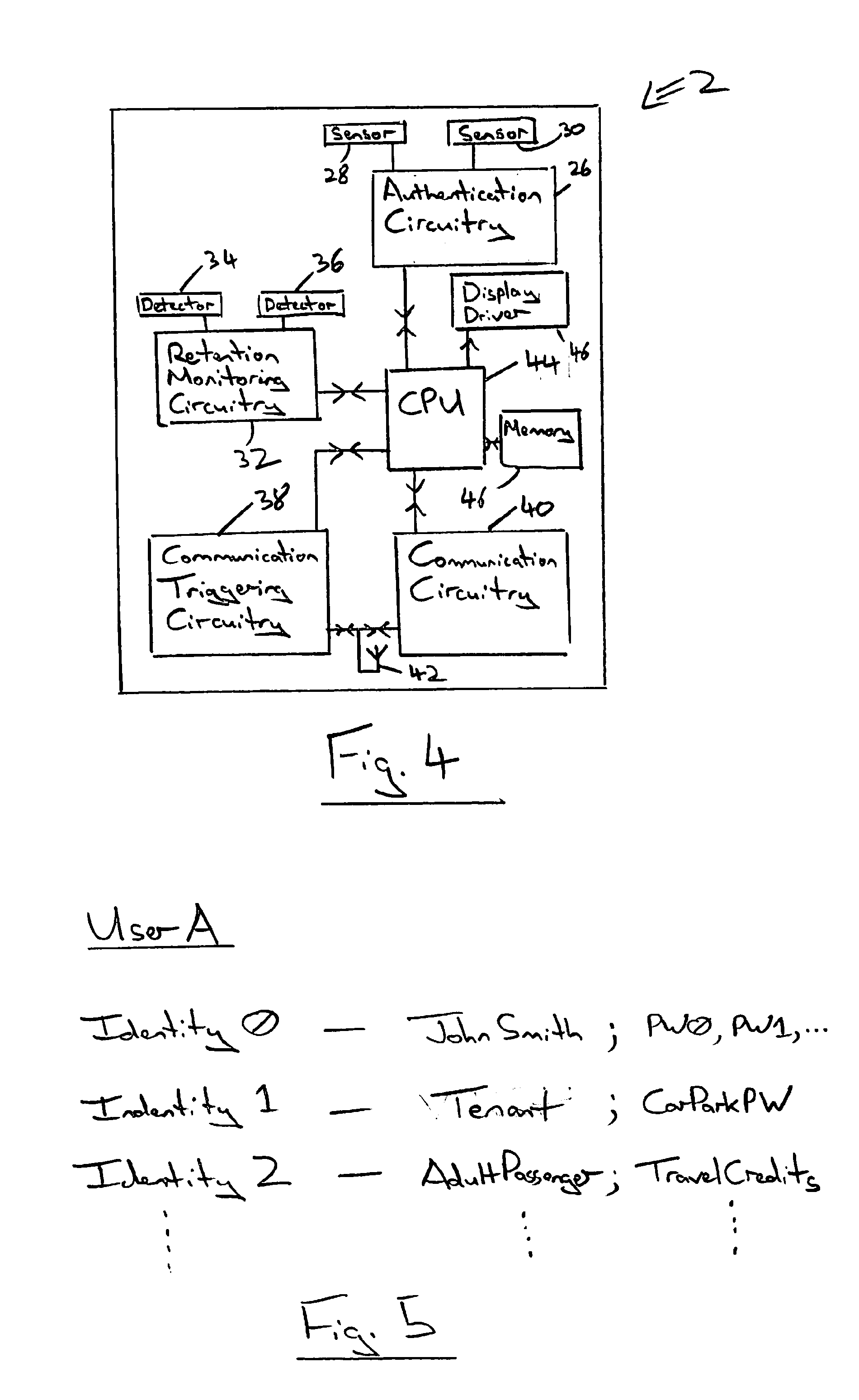Trusted device
a technology of trusted devices and monitoring circuits, applied in the direction of digital data authentication, security arrangement, transmission, etc., can solve the problems of increasing the difficulty of establishing trusted communication with target devices, increasing the burden of frequent password entry on trusted devices, etc., to improve the accuracy and reliability of retention monitoring circuits, and reduce the confidence in the continued physical possession
- Summary
- Abstract
- Description
- Claims
- Application Information
AI Technical Summary
Benefits of technology
Problems solved by technology
Method used
Image
Examples
Embodiment Construction
[0062]FIG. 1 schematically illustrates a trusted device 2 in the form of a wristwatch. A wristwatch is a wearable device. Other forms of trusted device could be a necklace, a keyfob for physical keys, etc. The trusted device 2 includes a watch body 4 having a display 6 upon which messages may be displayed. A fingerprint reader 8 is supplied for performing an authentication operation upon a user. A button 10 provides the user with the ability to communicate with the trusted device 2, such as to confirm or reject communication requests, select target devices, input secret data to be held by the trusted device 2, etc. The trusted device 2 includes a strap 12 having a clasp 14. The clasp 14 may be configured such that when the clasp 14 is opened this is recognised by the trusted device 2 and used to switch the trusted device 2 out of the authenticated state. A user wearing the trusted device 2 may authenticate themselves using the fingerprint reader 8 and so switch the trusted device 2 ...
PUM
 Login to View More
Login to View More Abstract
Description
Claims
Application Information
 Login to View More
Login to View More - R&D
- Intellectual Property
- Life Sciences
- Materials
- Tech Scout
- Unparalleled Data Quality
- Higher Quality Content
- 60% Fewer Hallucinations
Browse by: Latest US Patents, China's latest patents, Technical Efficacy Thesaurus, Application Domain, Technology Topic, Popular Technical Reports.
© 2025 PatSnap. All rights reserved.Legal|Privacy policy|Modern Slavery Act Transparency Statement|Sitemap|About US| Contact US: help@patsnap.com



